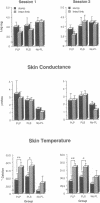Abstract
Phantom limb phenomena were correlated with psychophysiological measures of peripheral sympathetic nervous system activity measured at the amputation stump and contralateral limb. Amputees were assigned to one of three groups depending on whether they reported phantom limb pain, non-painful phantom limb sensations, or no phantom limb at all. Skin conductance and skin temperature were recorded continuously during two 30 minute sessions while subjects continuously monitored and rated the intensity of any phantom limb sensation or pain they experienced. The results from both sessions showed that mean skin temperature was significantly lower at the stump than the contralateral limb in the groups with phantom limb pain and non-painful phantom limb sensations, but not among subjects with no phantom limb at all. In addition, stump skin conductance responses correlated significantly with the intensity of non-painful phantom limb paresthesiae but not other qualities of sensation or pain. Between-limb measures of pressure sensitivity were not significantly different in any group. The results suggest that the presence of a phantom limb, whether painful or painless, is related to the sympathetic-efferent outflow of cutaneous vasoconstrictor fibres in the stump and stump neuromas. The hypothesis of a sympathetic-efferent somatic-afferent mechanism involving both sudomotor and vasoconstrictor fibres is proposed to explain the relationship between stump skin conductance responses and non-painful phantom limb paresthesiae. It is suggested that increases in the intensity of phantom limb paresthesiae follow bursts of sympathetic activity due to neurotransmitter release onto apposing sprouts of large diameter primary afferents located in stump neuromas, and decreases correspond to periods of relative sympathetic inactivity. The results of the study agree with recent suggestions that phantom limb pain is not a unitary syndrome, but a symptom class with each class subserved by different aetiological mechanisms.
Full text
PDF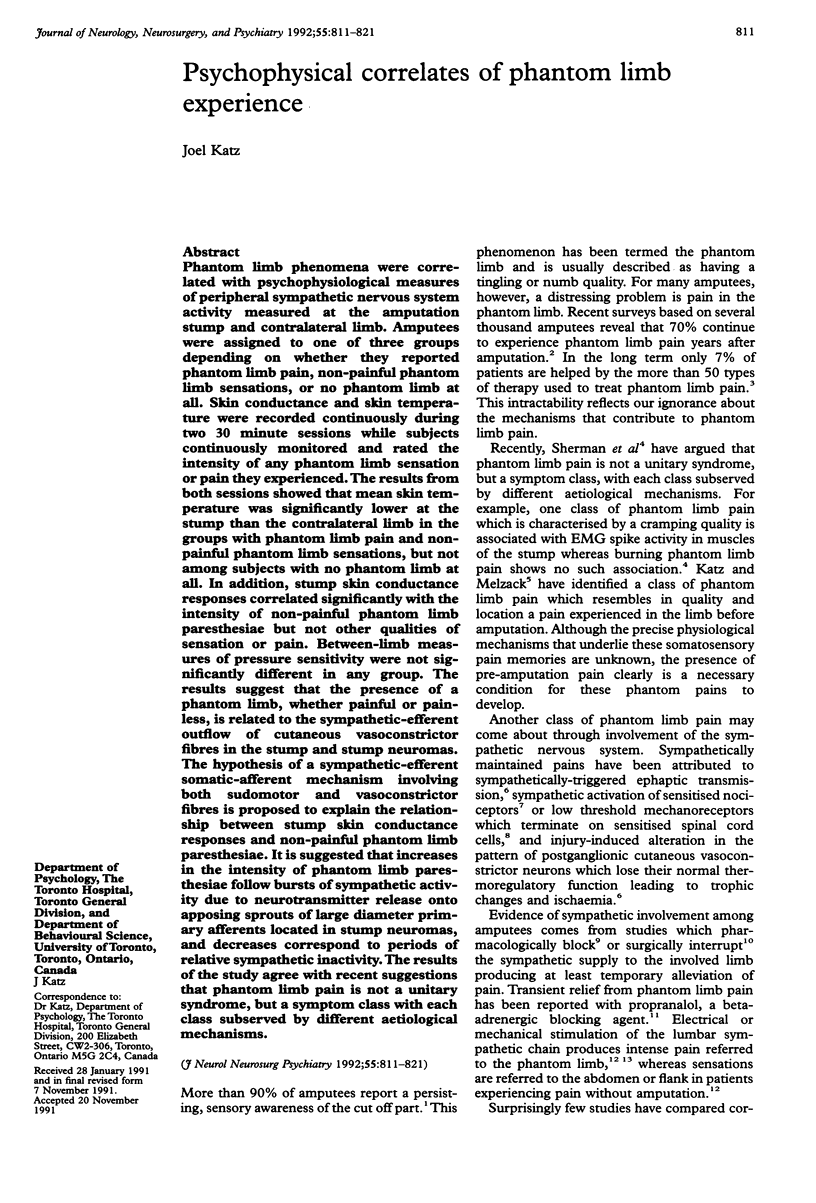
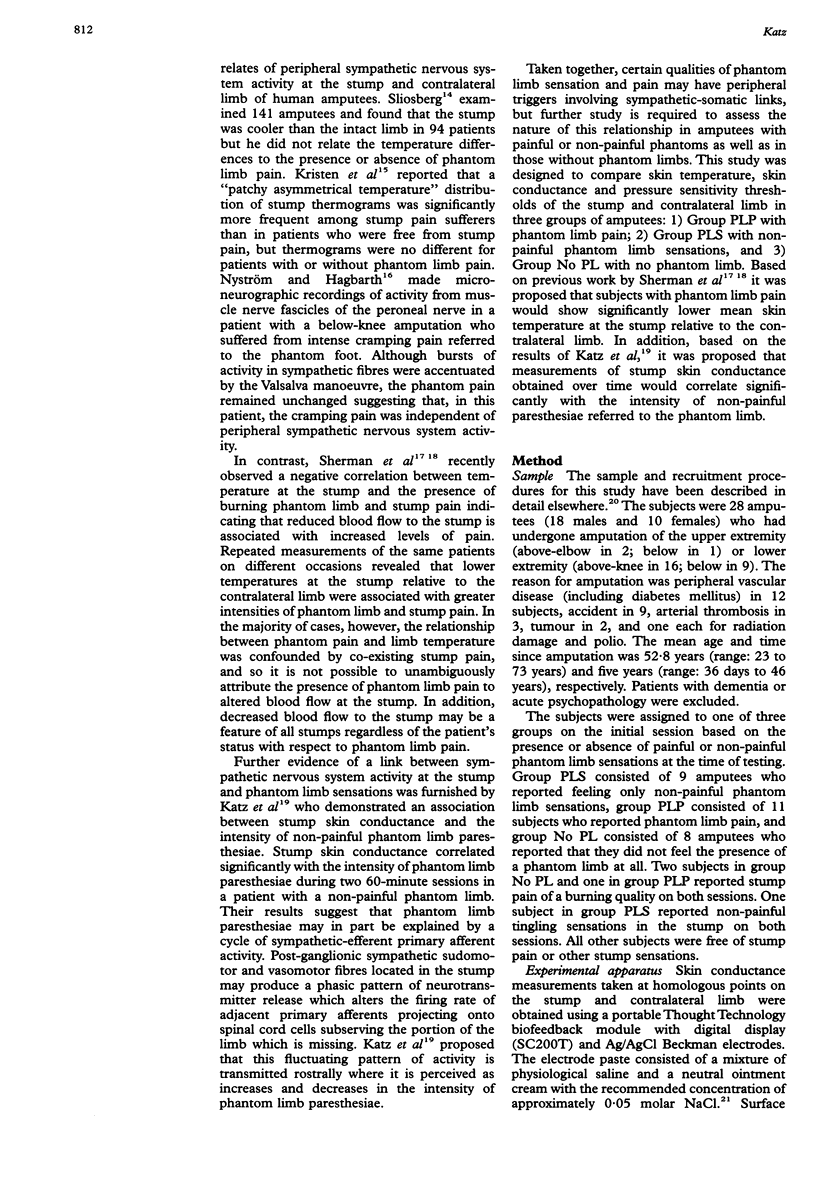
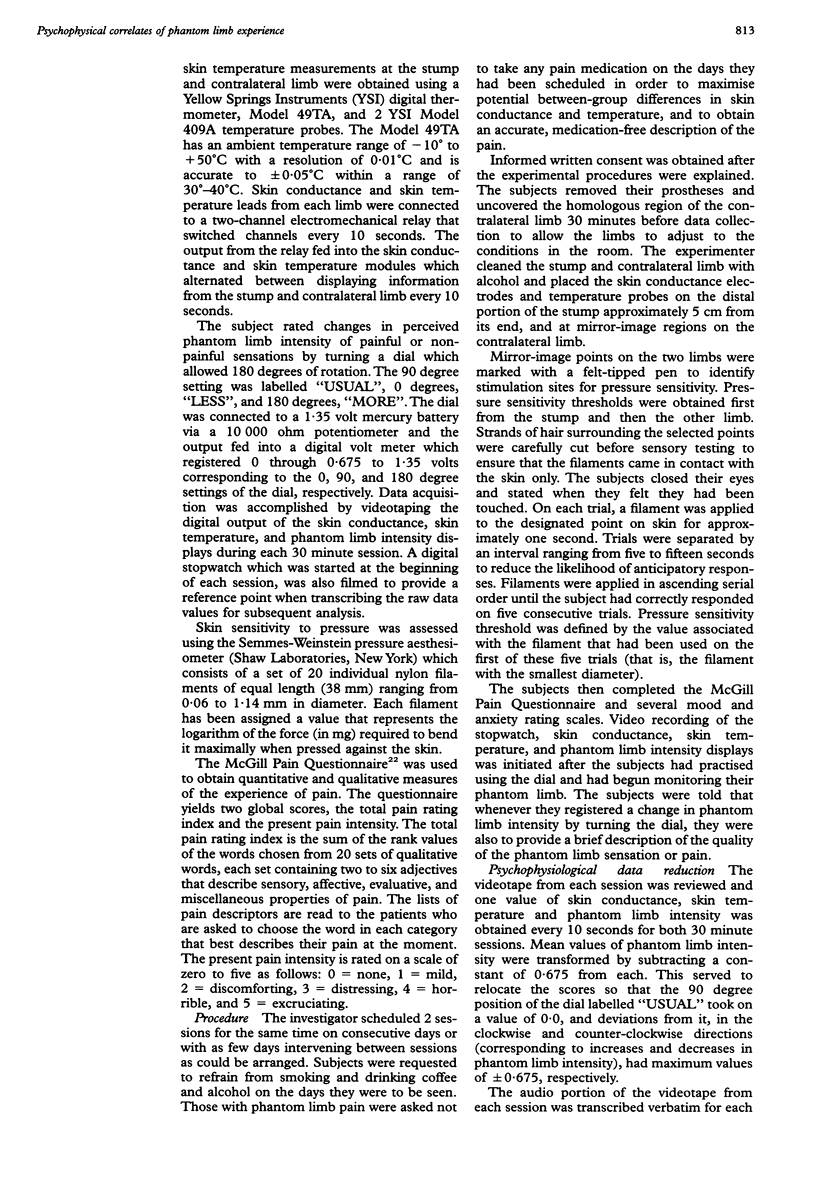
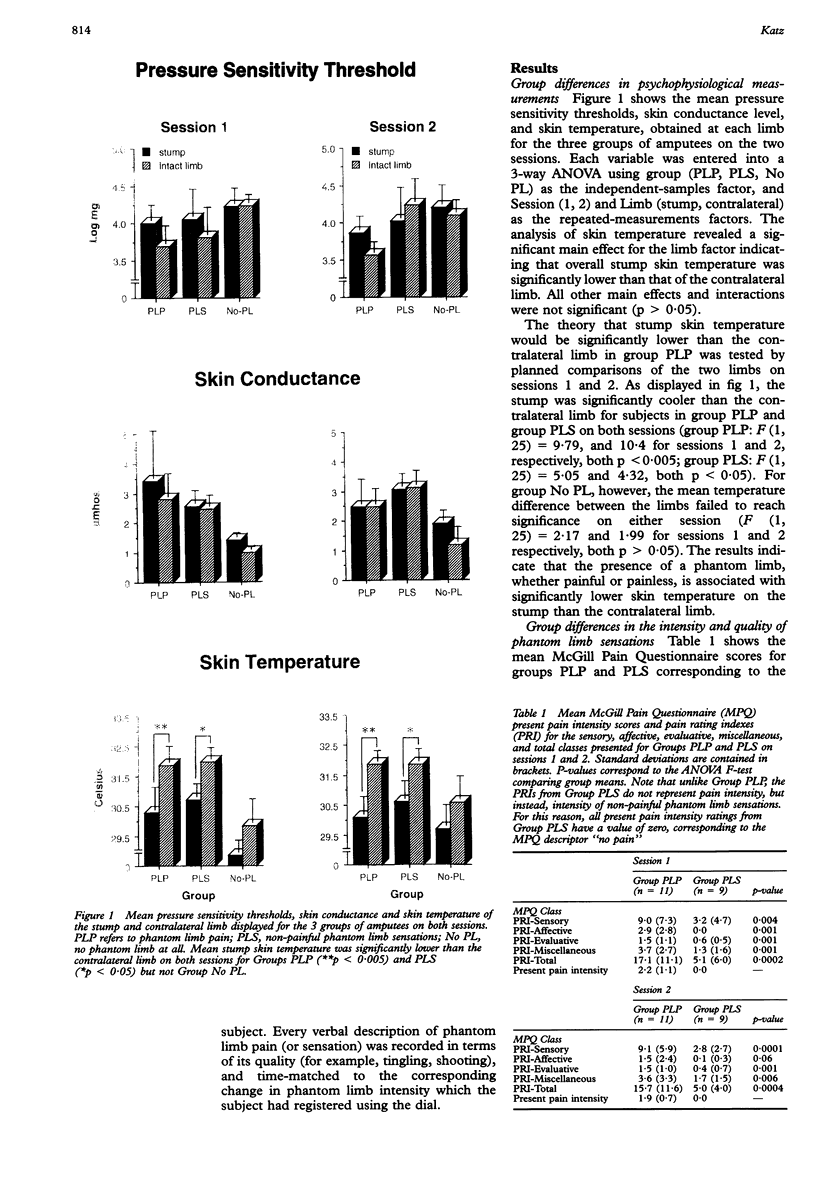
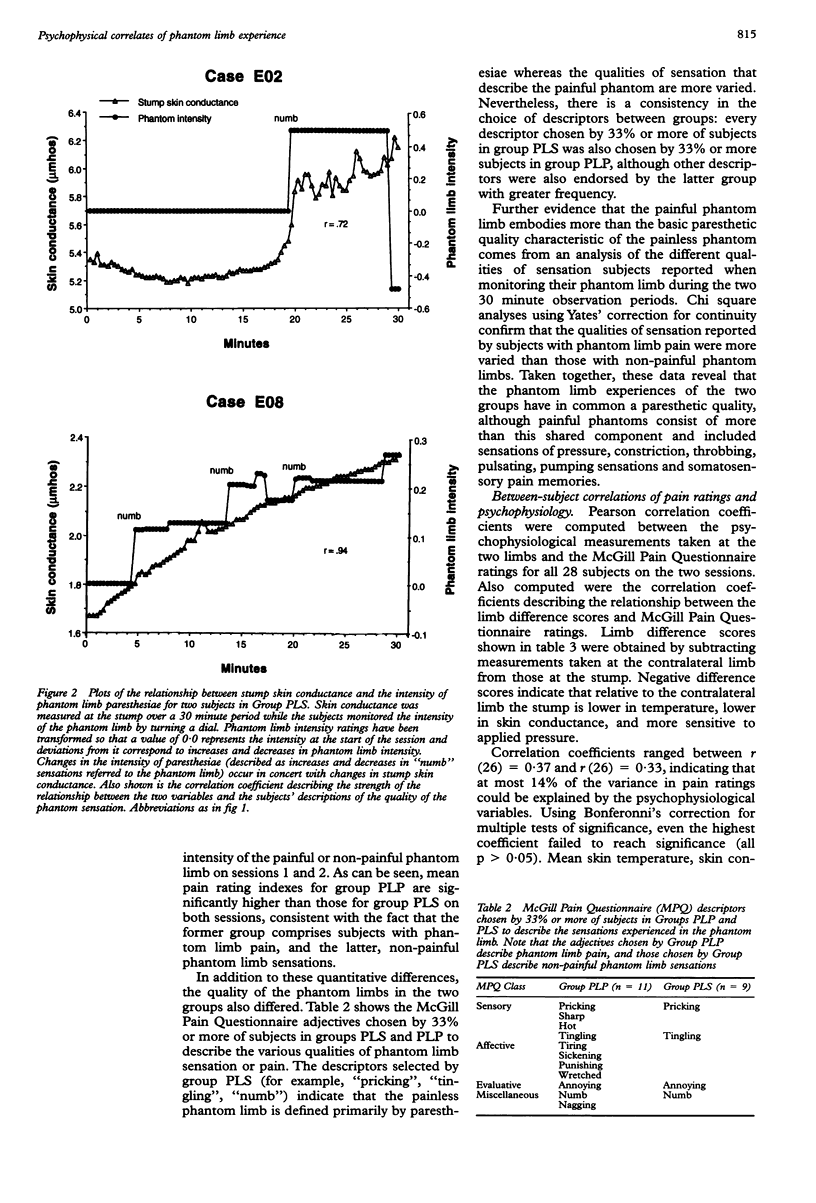
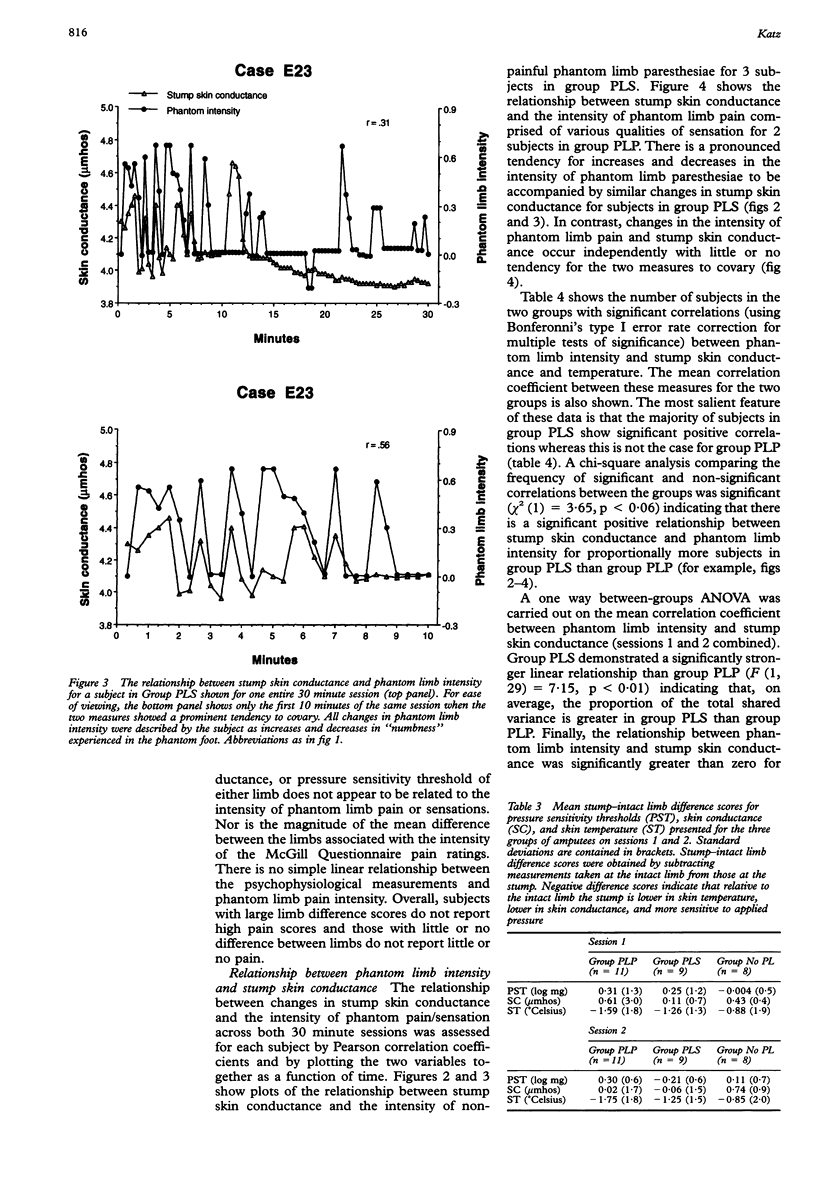

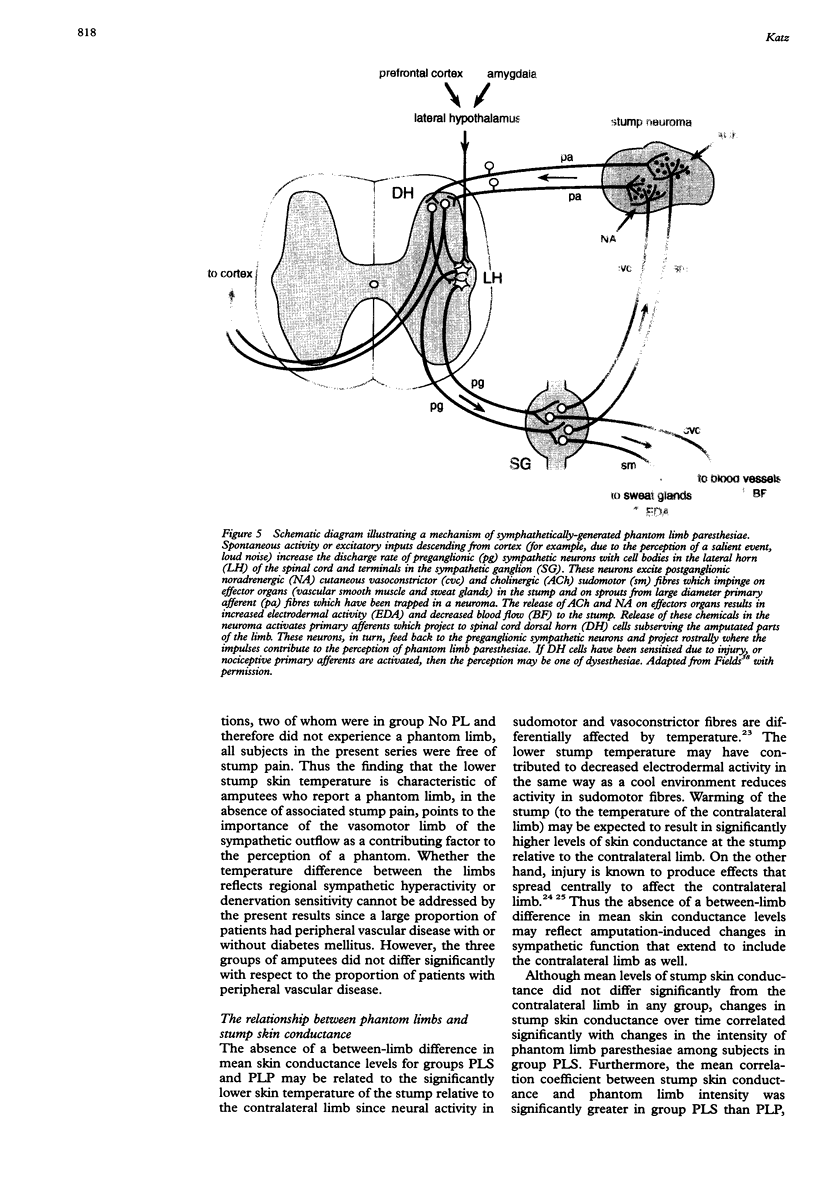
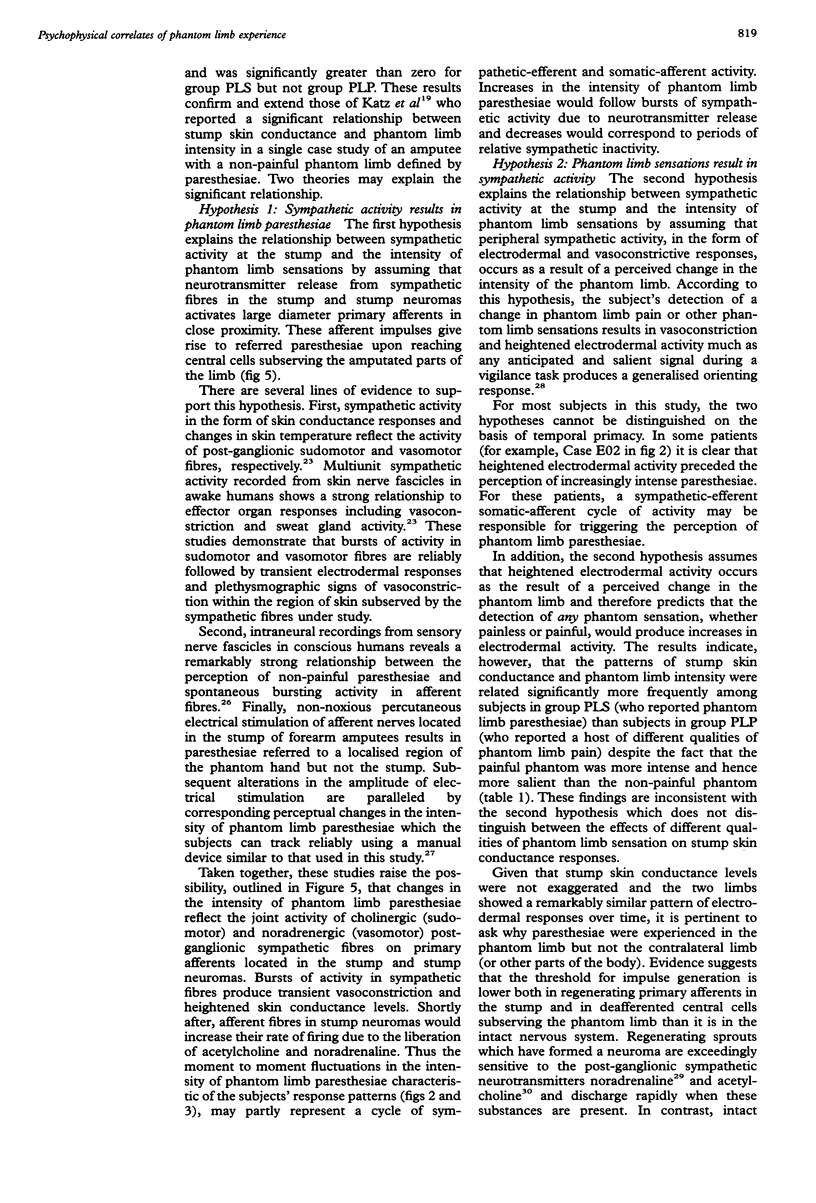
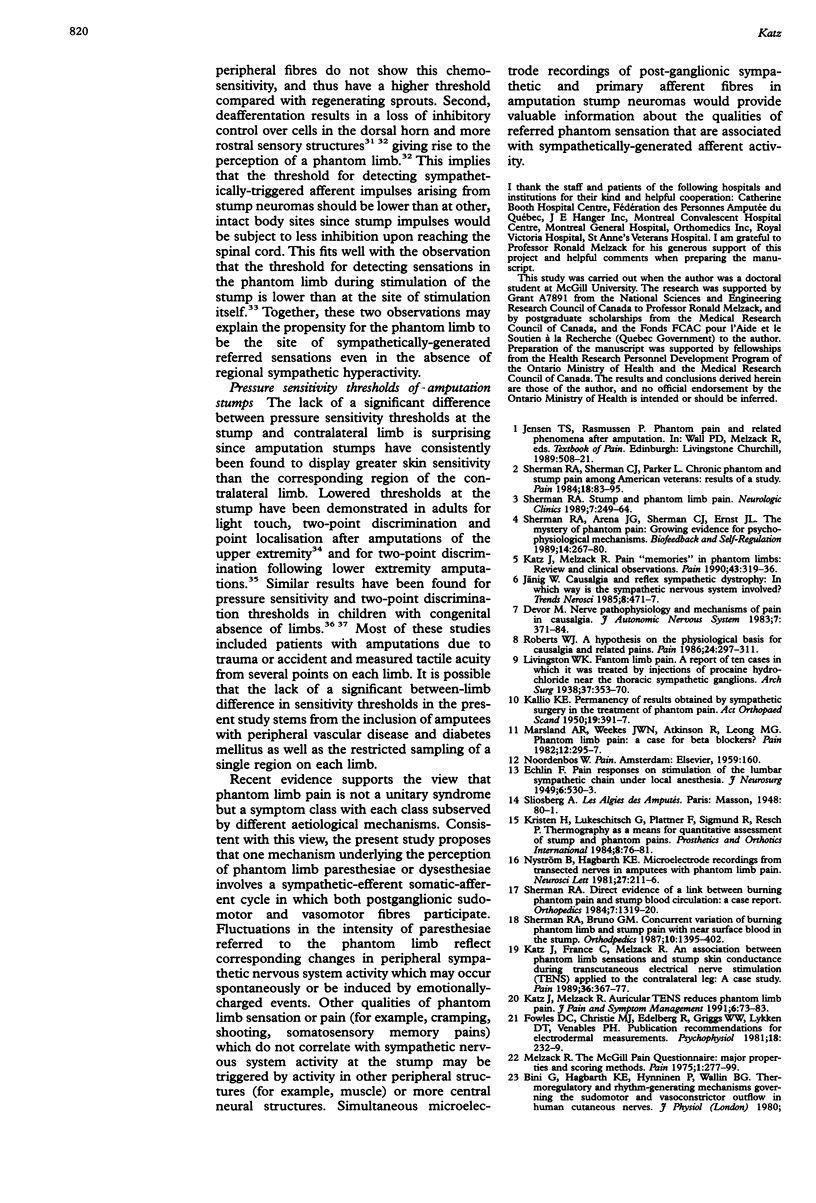
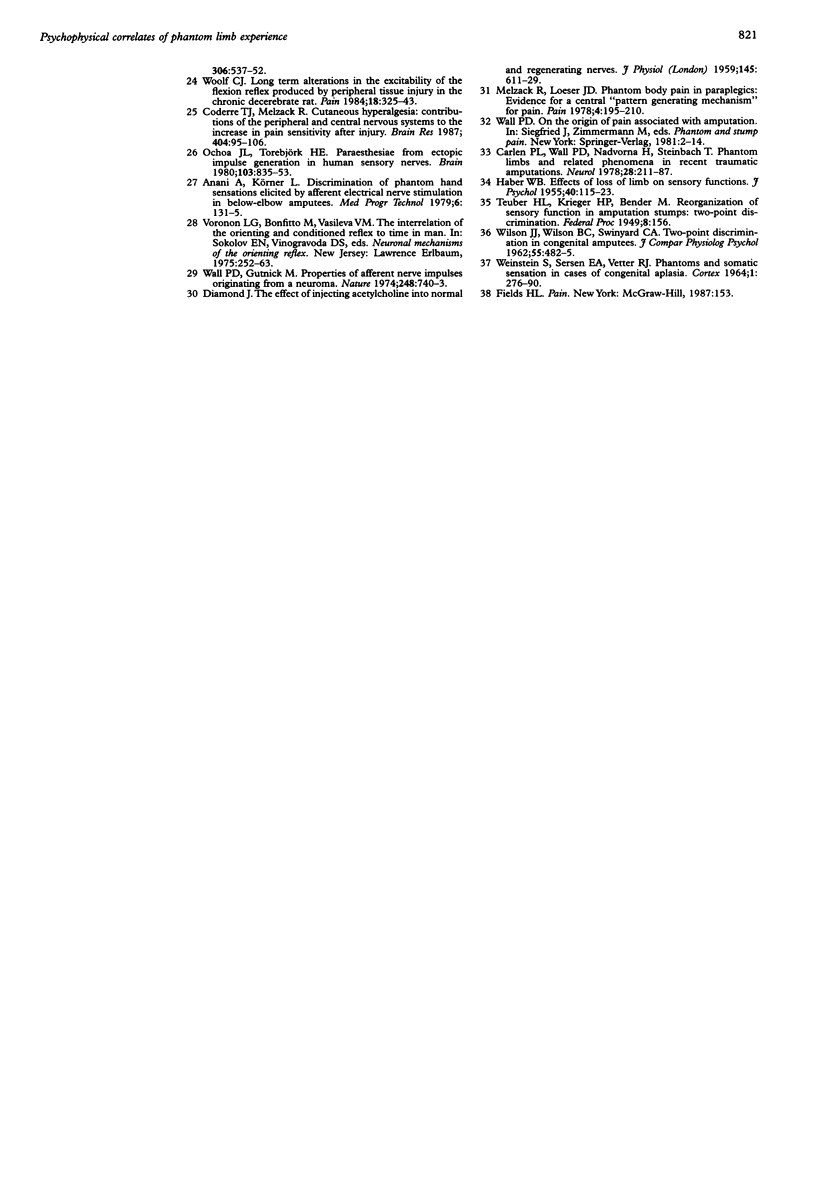
Images in this article
Selected References
These references are in PubMed. This may not be the complete list of references from this article.
- Anani A., Körner L. Discrimination of phantom hand sensations elicited by afferent electrical nerve stimulation in below-elbow amputees. Med Prog Technol. 1979 Jun 15;6(3):131–135. [PubMed] [Google Scholar]
- Carlen P. L., Wall P. D., Nadvorna H., Steinbach T. Phantom limbs and related phenomena in recent traumatic amputations. Neurology. 1978 Mar;28(3):211–217. doi: 10.1212/wnl.28.3.211. [DOI] [PubMed] [Google Scholar]
- Coderre T. J., Melzack R. Cutaneous hyperalgesia: contributions of the peripheral and central nervous systems to the increase in pain sensitivity after injury. Brain Res. 1987 Feb 24;404(1-2):95–106. doi: 10.1016/0006-8993(87)91359-x. [DOI] [PubMed] [Google Scholar]
- DIAMOND J. The effects of injecting acetylcholine into normal and regenerating nerves. J Physiol. 1959 Mar 12;145(3):611–629. doi: 10.1113/jphysiol.1959.sp006166. [DOI] [PMC free article] [PubMed] [Google Scholar]
- Devor M. Nerve pathophysiology and mechanisms of pain in causalgia. J Auton Nerv Syst. 1983 Mar-Apr;7(3-4):371–384. doi: 10.1016/0165-1838(83)90090-5. [DOI] [PubMed] [Google Scholar]
- ECHLIN F. Pain responses on stimulation of the lumbar sympathetic chain under local anesthesia; a case report. J Neurosurg. 1949 Nov;6(6):530–533. doi: 10.3171/jns.1949.6.6.0530. [DOI] [PubMed] [Google Scholar]
- Fowles D. C., Christie M. J., Edelberg R., Grings W. W., Lykken D. T., Venables P. H. Committee report. Publication recommendations for electrodermal measurements. Psychophysiology. 1981 May;18(3):232–239. doi: 10.1111/j.1469-8986.1981.tb03024.x. [DOI] [PubMed] [Google Scholar]
- Katz J., France C., Melzack R. An association between phantom limb sensations and stump skin conductance during transcutaneous electrical nerve stimulation (TENS) applied to the contralateral leg: a case study. Pain. 1989 Mar;36(3):367–377. doi: 10.1016/0304-3959(89)90098-5. [DOI] [PubMed] [Google Scholar]
- Katz J., Melzack R. Auricular transcutaneous electrical nerve stimulation (TENS) reduces phantom limb pain. J Pain Symptom Manage. 1991 Feb;6(2):73–83. doi: 10.1016/0885-3924(91)90521-5. [DOI] [PubMed] [Google Scholar]
- Katz J., Melzack R. Pain 'memories' in phantom limbs: review and clinical observations. Pain. 1990 Dec;43(3):319–336. doi: 10.1016/0304-3959(90)90029-D. [DOI] [PubMed] [Google Scholar]
- Kristen H., Lukeschitsch G., Plattner F., Sigmund R., Resch P. Thermography as a means for quantitative assessment of stump and phantom pains. Prosthet Orthot Int. 1984 Aug;8(2):76–81. doi: 10.3109/03093648409145352. [DOI] [PubMed] [Google Scholar]
- Marsland A. R., Weekes J. W., Atkinson R. L., Leong M. G. Phantom limb pain: a case for beta blockers? Pain. 1982 Mar;12(3):295–297. doi: 10.1016/0304-3959(82)90161-0. [DOI] [PubMed] [Google Scholar]
- Melzack R., Loeser J. D. Phantom body pain in paraplegics: evidence for a central "pattern generating mechanism" for pain. Pain. 1978 Feb;4(3):195–210. doi: 10.1016/0304-3959(77)90133-6. [DOI] [PubMed] [Google Scholar]
- Melzack R. The McGill Pain Questionnaire: major properties and scoring methods. Pain. 1975 Sep;1(3):277–299. doi: 10.1016/0304-3959(75)90044-5. [DOI] [PubMed] [Google Scholar]
- Ochoa J. L., Torebjörk H. E. Paraesthesiae from ectopic impulse generation in human sensory nerves. Brain. 1980 Dec;103(4):835–853. doi: 10.1093/brain/103.4.835. [DOI] [PubMed] [Google Scholar]
- Roberts W. J. A hypothesis on the physiological basis for causalgia and related pains. Pain. 1986 Mar;24(3):297–311. doi: 10.1016/0304-3959(86)90116-8. [DOI] [PubMed] [Google Scholar]
- Sherman R. A., Arena J. G., Sherman C. J., Ernst J. L. The mystery of phantom pain: growing evidence for psychophysiological mechanisms. Biofeedback Self Regul. 1989 Dec;14(4):267–280. doi: 10.1007/BF00999118. [DOI] [PubMed] [Google Scholar]
- Sherman R. A., Bruno G. M. Concurrent variation of burning phantom limb and stump pain with near surface blood flow in the stump. Orthopedics. 1987 Oct;10(10):1395–1402. doi: 10.3928/0147-7447-19871001-09. [DOI] [PubMed] [Google Scholar]
- Sherman R. A., Sherman C. J., Parker L. Chronic phantom and stump pain among American veterans: results of a survey. Pain. 1984 Jan;18(1):83–95. doi: 10.1016/0304-3959(84)90128-3. [DOI] [PubMed] [Google Scholar]
- Sherman R. A. Stump and phantom limb pain. Neurol Clin. 1989 May;7(2):249–264. [PubMed] [Google Scholar]
- WILSON J. J., WILSON B. C., SWINYARD C. A. Two-point discrimination in congenital amputees. J Comp Physiol Psychol. 1962 Aug;55:482–485. doi: 10.1037/h0042122. [DOI] [PubMed] [Google Scholar]
- Wall P. D., Gutnick M. Properties of afferent nerve impulses originating from a neuroma. Nature. 1974 Apr 26;248(5451):740–743. doi: 10.1038/248740a0. [DOI] [PubMed] [Google Scholar]
- Woolf C. J. Long term alterations in the excitability of the flexion reflex produced by peripheral tissue injury in the chronic decerebrate rat. Pain. 1984 Apr;18(4):325–343. doi: 10.1016/0304-3959(84)90045-9. [DOI] [PubMed] [Google Scholar]



